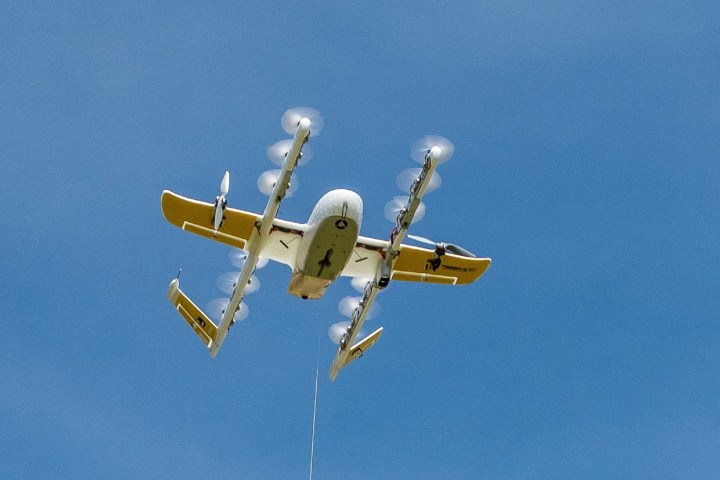
Alphabet Wing, the drone delivery startup owned by Google’s parent company, announced that it has become the first company to receive Air Carrier Certification from the United States Federal Aviation Administration (FAA). This lets Wing begin commercial deliveries from local businesses to homes in the U.S. — including the crucial ability to fly over civilians and beyond the visible line of sight of drone operators.
Operations will start “over the coming weeks” in the Blacksburg and Christiansburg areas of Virginia, where Wing will run a commercial delivery pilot as part of the Integrated Pilot Program (IPP) later in 2019. This means that the U.S. will officially join Canberra, Australia, where Wing already operates a commercial air delivery service. It is also poised to start trials in Europe, delivering to homes in Helsinki, Finland.
“This is a significant first step in a process that will ultimately allow Wing to build a business that uses delivery drones to transport important items to be people when they need them the most, more quickly, safely and conveniently, and with a low carbon footprint,” a spokesperson for Wing told Digital Trends. “The thousands of deliveries we’ve done to the hundreds of testers we’ve been delivering around the world have proven the value of our technology — whether it be delivering pharmacy items to the elderly, or a meal to parents whose children are sick, or a hot coffee to shift workers and others on tight schedules.”
Wing has been working for six years toward its mission of building small, lightweight aircraft, along with a navigation system able to safely deliver small packages on demand. To date, the company’s drones have flown more than 70,000 test flights and made more than 3,000 deliveries to doorsteps, driveways, and backyards of customers in Australia, where the service is currently operational.
Wing’s spokesperson told us that the company has been working with the FAA since April 2017 to establish a safety case, and demonstrate that its aircraft, personnel, operations, and procedures meet the necessary safety standards. Over the coming months, the next step will involve engaging with businesses and community members in Blacksburg and Christiansburg to answer questions, solicit feedback, and showcase the technology.
Hopefully, it won’t be too long after that before similar drone deliveries roll out across the United States.
Editors' Recommendations
- Check out Wing’s largest delivery drone yet
- Wing and Walmart partner for Dallas drone delivery service
- Drone delivery leader Wing heads to new country for next pilot program
- Wing builds bigger and smaller drones for more deliveries
- Wing is live in Dallas, poised for drone delivery domination


